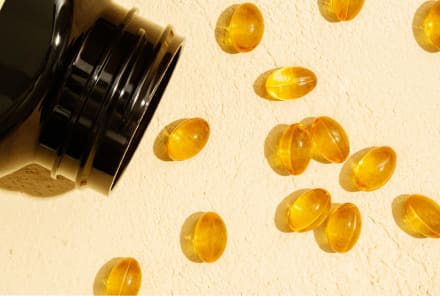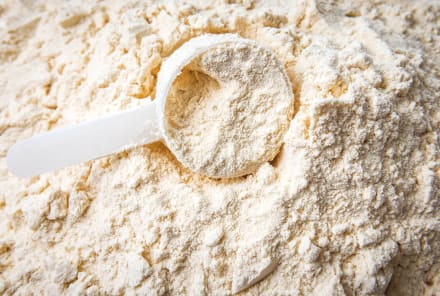Advertisement

By now, you might be aware that the human microbiome—which is totally unique from person to person—is the collection of living organisms in the body, including trillions of beneficial bacteria that help you digest food, support your immune system, regulate your mood, and more. You might also know that maintaining a balanced microbiome—crowding out the bad bacteria with the good—is ideal and that supplementing with probiotics is one way to help that process along.
But do you know what actually happens to a probiotic after you ingest it? That's an equally important piece since it could mean the difference between an effective probiotic and, potentially, a useless one.
Getting to the gut.
The thing to keep in mind is that probiotics are live organisms, and they're pretty fragile. In capsule form, probiotics need to survive not just the manufacturing process but also the transit through our digestive tract to establish a presence in the lower gut—the small intestine or the colon—where hopefully, they'll stick around and repopulate. But here's where it gets tricky.
Right after swallowing, any bacteria we ingest is exposed to digestive enzymes in our saliva before reaching the stomach. Once in the stomach, the bacteria have to face very strong acids containing pepsin, the powerful enzyme that further breaks down and digests our food. The bad news is that most bacteria we consume do not survive such an acidic environment. (We're talking about probiotic supplements specifically here, but just as a side note: Research suggests that dairy products like yogurt may buffer the pH of the stomach, helping bacteria survive).
The strains that do make it past the stomach and move into the small intestine—digestive enzymes like amylase, lipase, and protease are still present, but overall, it's less acidic than the stomach—have a better chance of survival. And here's the good news: Some manufacturers use special enteric-coated capsules that help protect probiotics from the stomach's acidity for at least 60 minutes. So you don't have to worry about the pH level of your stomach when you take a probiotic. Solaray®'s non-GMO Mycrobiome® probiotics, for example, use an innovative, vegan enteric capsule called Enteric Shield® that ensures its bacterial strains stay alive and intact until they reach their destination in the lower gut.
Want to see it in action in Solaray®'s lab? This video demonstrates how the Enteric Shield® works inside the stomach:
Am I doing this right?
So, as long as you've got a high-quality probiotic with an enteric capsule, multiple strains, and at least 15 billion CFUs, there's not much room to mess up! (Reported side effects of taking probiotics, or taking too many at a time, are typically mild bloating or discomfort.)
That said, even though an enteric capsule around your probiotic means bacteria survival is one less thing to worry about, it's also important to make sure all that unharmed good bacteria can thrive in your gut so you can actually reap the benefits of a balanced microbiome. That's why any conversation about probiotics isn't complete without talking about prebiotics.
A prebiotic is essentially plant fiber that easily gets through the stomach undigested and then feeds the friendly bacteria that reside in the gut. You can find prebiotic fiber in whole plant foods like apples, asparagus, bananas, even nuts, so munching on whole plant foods is one of the best things you can do to keep the beneficial bacteria in your gut going strong. And lastly, try avoiding processed foods, refined sugars, and artificial additives, which can affect your friendly flora.
Doing so will ultimately help your probiotic supplement work better, so you can feel good knowing that gut-balancing benefits are on the way.


















